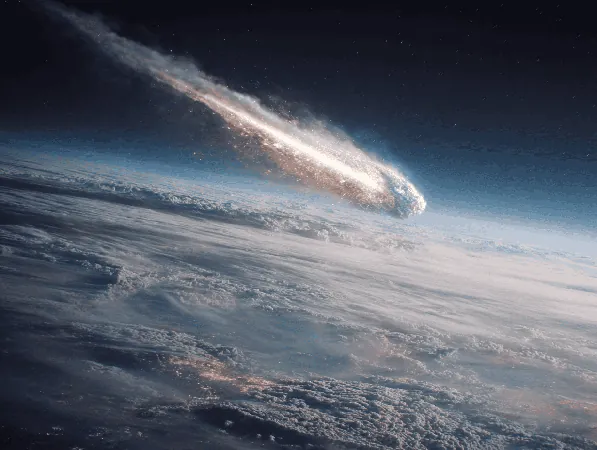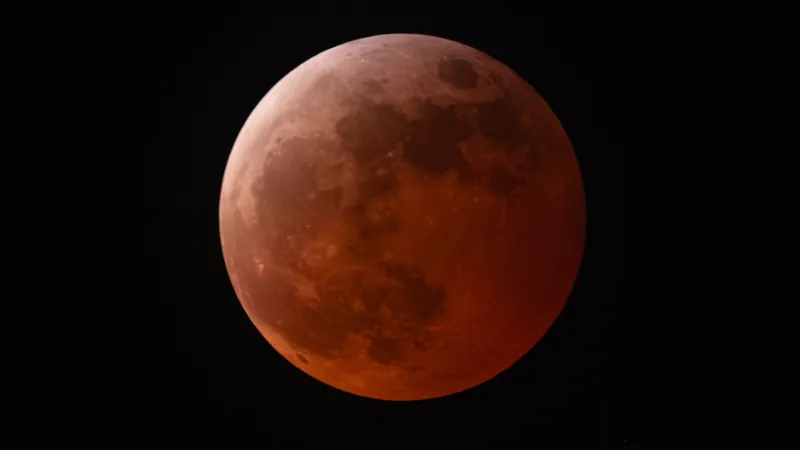
Did a Comet Explosion Freeze the Earth for Centuries? New Evidence Emerges!
2025-08-18
Author: Jacques
In a shocking revelation, researchers have uncovered compelling evidence suggesting that a comet explosion over Earth 12,800 years ago could have plunged our planet into a brutal thousand-year cold period known as the Younger Dryas. This stunning conclusion comes from a groundbreaking study analyzing ancient sediments in the eastern United States.
Recently, scientists from the University of South Carolina took their quest a step further, diving deep beneath the ocean to investigate the effects of this catastrophic event. Their analysis of Baffin Bay seafloor mud, near Greenland, yielded tiny traces of comet debris and metallic remnants that match the characteristics of a cosmic airburst.
A Cosmic Mystery Unveiled!
The abrupt global cooling during the end of the last Ice Age has long sparked debate among scientists. Some blamed surging meltwater disrupting ocean currents, while others speculated about a celestial cause. Previously, the lack of a definitive crater or conclusive evidence made the comet theory seem far-fetched. However, this latest research might just flip the narrative.
As Vladimir Tselmovich, one of the researchers, emphasized, "Our findings bolster the theory that Earth was struck by a massive comet around 12,800 years ago, releasing enough dust into the atmosphere to ignite a temporary 'impact winter' and trigger an extensive 1,400-year cooling period."
Unearthing the Truth from the Ocean Floor
To verify if signs of this comet impact present on land were mirrored in ocean sediment, the team analyzed sediment cores—cylindrical samples drilled from the seabed that act as detailed historical records of environmental changes.
From pristine Baffin Bay, free of human interference, researchers retrieved four sediment cores that corresponded to the timeline of the Younger Dryas through radiocarbon dating.
After a meticulous examination, they identified multiple traces of cometary materials based on the shape and composition of the microparticles found.
A Cosmic Connection Revealed!
Using robust analytical techniques, the scientists employed electron microscopy to uncover particle forms, while spectroscopy and mass spectrometry assessed their chemical signatures. The results were astonishing, revealing metallic grains with unusually high levels of nickel, cobalt, platinum, and iridium—elements commonly associated with cosmic objects.
Some iron particles exhibited low oxygen content but rich nickel, indicative of the composition typically found in comets and meteorites. They even discovered microspherules—tiny melted rock spheres formed when Earth materials fused with extraterrestrial dust during a brutal airburst.
Remarkably, this evidence aligns with earlier findings from terrestrial sites worldwide, where layers from 12,800 years ago were found rich in platinum, iridium, and even nanodiamonds.
A Chilling Cosmic Event!
These consistent discoveries across land and sea bolster the argument that the Younger Dryas event was not only abrupt but had a global impact, likely tied to a fragmented comet that exploded in Earth's atmosphere.
As comet dust ascended into the upper atmosphere, it obscured sunlight, leading to plummeting temperatures, wilting plants, and a sudden halt to the warming climate that followed the Ice Age.
The researchers conclude that this study lends credence to the Younger Dryas impact hypothesis, suggesting a dramatic transformation in climate and environment following Earth's encounter with a formidable comet.
The Need for More Evidence
If proven, this groundbreaking research would redefine one of history's greatest climate enigmas. The Younger Dryas wasn’t merely a brief chill; it lasted approximately 1,400 years, causing a staggering temperature drop of around 10°C and reshaping entire ecosystems.
This period coincided with the extinction of mammoths and other large creatures in North America but also marked significant cultural shifts for ancient Paleo-Indians. A comet airburst narrative parallels other monumental cosmic disasters in Earth's story, albeit on a smaller scale than the asteroid event that wiped out the dinosaurs.
However, the quest for conclusive evidence is far from over. The researchers recognize the absence of a physical crater and emphasize the need for further investigations. Their next mission involves exploring sediment cores from various ocean sites to uncover additional traces of comet debris.









 Brasil (PT)
Brasil (PT)
 Canada (EN)
Canada (EN)
 Chile (ES)
Chile (ES)
 Česko (CS)
Česko (CS)
 대한민국 (KO)
대한민국 (KO)
 España (ES)
España (ES)
 France (FR)
France (FR)
 Hong Kong (EN)
Hong Kong (EN)
 Italia (IT)
Italia (IT)
 日本 (JA)
日本 (JA)
 Magyarország (HU)
Magyarország (HU)
 Norge (NO)
Norge (NO)
 Polska (PL)
Polska (PL)
 Schweiz (DE)
Schweiz (DE)
 Singapore (EN)
Singapore (EN)
 Sverige (SV)
Sverige (SV)
 Suomi (FI)
Suomi (FI)
 Türkiye (TR)
Türkiye (TR)
 الإمارات العربية المتحدة (AR)
الإمارات العربية المتحدة (AR)